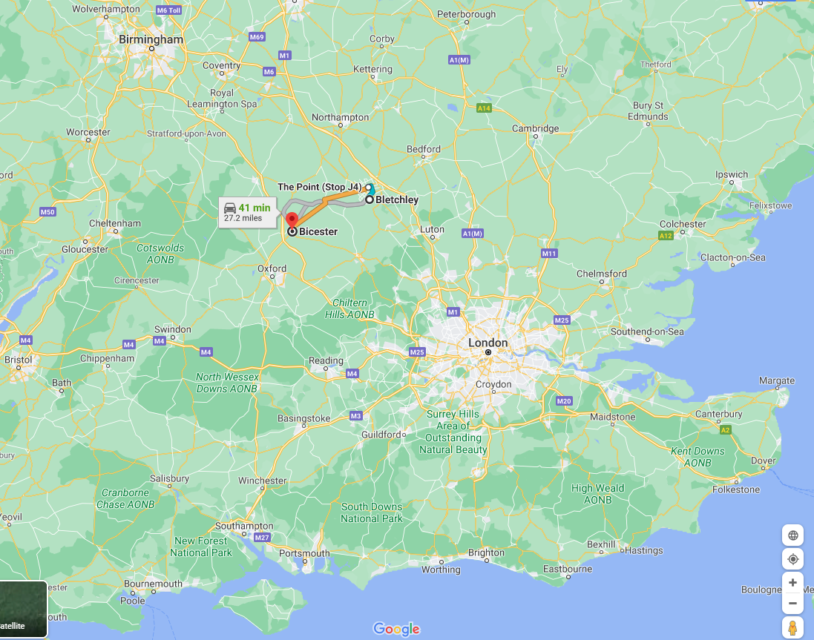At the Continental Telegraph, Tim Worstall looks at the economic case for building the East-West railway line — in “reverse Beeching” style — to connect Oxford and Cambridge:
The cash from the Department of Transport will be used to lay track along a disused railway line between Bicester and Bletchley, in Buckinghamshire, with services beginning in 2025.
Excuse me? £760m to link Bicester and Bletchley? Other than the fact that that is £50m/mile, which should be the cost of rail lines made from crushed Faberge eggs and unicorn hair, how many people want to travel between Bicester and Bletchley by train? That’s roughly £10K/person in those small towns. OK,that then extends to Oxford, but that allows around 30,000 more people to go by train to Oxford. Which is not a particularly busy commuter metropolis anyway.
The aim is to complete the whole project by the end of the decade, according to the government minister overseeing it.
2 miles per year? Are they going to use canals and horses like Brunel?
[…]
Elsewhere, the new railway will shorten journey times between routes outside of London. Travellers from Oxford for example, will no longer have take a train into the capital and back out again to reach Milton Keynes, but could travel there via Bicester.
Again, what’s the demand for this? How many people want to do this, and would it be cheaper to just hire some chauffeurs to drive each passenger in a Ferrari from Bicester to where they want in Milton Keynes? I doubt it will be any quicker than a car because this only gets you to Bletchley, and then you have to get off a train to get to Milton Keynes, and then get where you want in Milton Keynes.
This used to be an active railway corridor before the Beeching cuts in the 1960s, which slashed a lot of uneconomic branch lines from British Rail’s network. If the land wasn’t sold off, then it’s just a matter of re-laying the track and ensuring that any existing bridges, embankments and drainage culverts are still capable of handling the renewed rail traffic. It seems unlikely that the mere engineering aspects of the project would require several hundred million pounds to complete, so perhaps there are some land issues that need to be re-acquired to allow the railway to become active again.





